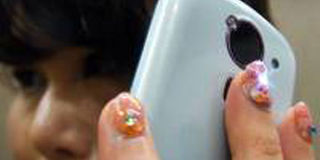Premium
Your nails can tell a lot about the state of your health

Like every other part of the body, nails play an important role. PHOTO/GLOWNAIL.COM
What you need to know:
Do not cut cuticles: they act as natural barriers to bacteria and fungus, thus cutting them can lead to infections that can harm the nail bed.
- Apply a nail hardener regularly to strengthen the nails.
- Rub in a moisturiser, such as hand lotion into the cuticles and fingernails to keep them moisturised.
Like every other part of the body, nails play an important role. They protect the toes and fingers, we use them to scratch, and they help you pick up tiny objects. The nail is composed of various parts:
The matrix: this is the root of the nail. The matrix continuously makes new cells to replace the old cells. When a nail rises above the skin, it is already dead, the reason it does not hurt to trim.
Nail plate: this is the actual nail, which is made of translucent keratin (a tough, fibrous and insoluble protein). The nail appears pink due to the blood vessels below it.
Nail bed: this is the skin below the nail plate.
The cuticle: this is a tiny piece of skin at the point where the nail grows out of the finger. It prevents germs from getting into the matrix.
The lunula: this is the tiny, white, half-moon shaped part that at the base of the nail. It is more visible on the thumb. It is in fact part of the matrix.
Taking good care of your nails not only enhances your looks, but also guarantees hygiene and healthy-looking nails. To achieve this;
Keep your nails clean and dry to prevent growth of harmful bacteria under the fingernails. Also avoid prolonged contact with water since this can lead to split fingernails. Put on cotton-lined rubber gloves when using harsh chemicals.
Trim your nails: Long ones can harbour germs or cause injury. When trimming toe nails, trim in a straight line with sharp scissors or using a nail cutter. Using a nail file, shape the nails and ensure that the edges are smooth. Improper trimming can split the nails. It can also cause ingrown nails, a curved toenail that grows into the skin.
Do not cut cuticles: they act as natural barriers to bacteria and fungus, thus cutting them can lead to infections that can harm the nail bed.
Apply a nail hardener regularly to strengthen the nails.
Rub in a moisturiser, such as hand lotion into the cuticles and fingernails to keep them moisturised.
Do not bite your fingernails, since this can damage the nail bed.
Avoid using harsh nail care products. For example, use acetone-free nail polish remover to prevent your nails from becoming brittle.
When you go for a professional manicure or pedicure, ensure that all the tools are sterilised, to protect yourself from getting an infection.
Some nail problems, such as white lines or spots can go away on their own as the nail grows. However, See a dermatologist if you notice any of the following:
Thickening or thinning of nails
Changes in the shape of your nails, for instance bent nails
Changes in colour, for instance dark lines beneath the nail or discolouration of the whole nail.
Pain, bleeding, or swelling around the nails.
Detachment of the nail from the skin.




